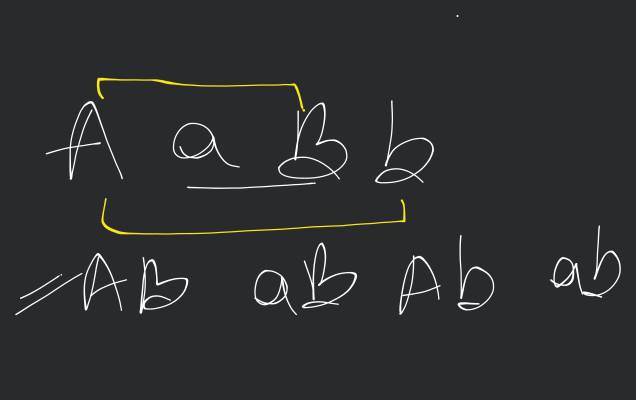Question
Easy
Solving time: 2 mins
Which of the following is suitable for experiment on linkage?
Found 7 tutors discussing this question
Discuss this question LIVE
15 mins ago
 Text solution
Text solution Verified
Verified
aabb is suitable for experiment on linkage. Linkage is the tendency for certain genes to be inherited together, because they are on the same chromosome. Thus, parental combinations of characters are found more frequently in offspring than non-parental characters.
Was this solution helpful?
144
Share
Report
Filo tutor solutions (3)
Learn from their 1-to-1 discussion with Filo tutors.
4 mins
Uploaded on: 2/20/2023
Was this solution helpful?
52
Share
Report
8 mins
Uploaded on: 4/4/2023
Was this solution helpful?
77
Share
Report

One destination to cover all your homework and assignment needs
Learn Practice Revision Succeed

Instant 1:1 help, 24x7
60, 000+ Expert tutors

Textbook solutions
Big idea maths, McGraw-Hill Education etc

Essay review
Get expert feedback on your essay

Schedule classes
High dosage tutoring from Dedicated 3 experts
Practice questions from CBSE New Pattern Biology Class 12 for 2021-22 Exam MCQs based book for Term 1
Question 1
Medium
Views: 6,023
Question 2
Medium
Views: 5,288
Question 4
Medium
Views: 6,094
Practice more questions from Principles of Inheritance and Variation
Question 1
Medium
Views: 5,503
Practice questions on similar concepts asked by Filo students
Question 2
Views: 5,242
Question 3
Views: 5,961
Question 4
Views: 5,303
What will be the base sequence of DNA against the base sequence AUCGCCUGA of RNA?


Stuck on the question or explanation?
Connect with our Biology tutors online and get step by step solution of this question.
231 students are taking LIVE classes
| Question Text | Which of the following is suitable for experiment on linkage? |
| Updated On | Apr 4, 2023 |
| Topic | Principles of Inheritance and Variation |
| Subject | Biology |
| Class | Class 12 |
| Answer Type | Text solution:1 Video solution: 3 |
| Upvotes | 341 |
| Avg. Video Duration | 4 min |








